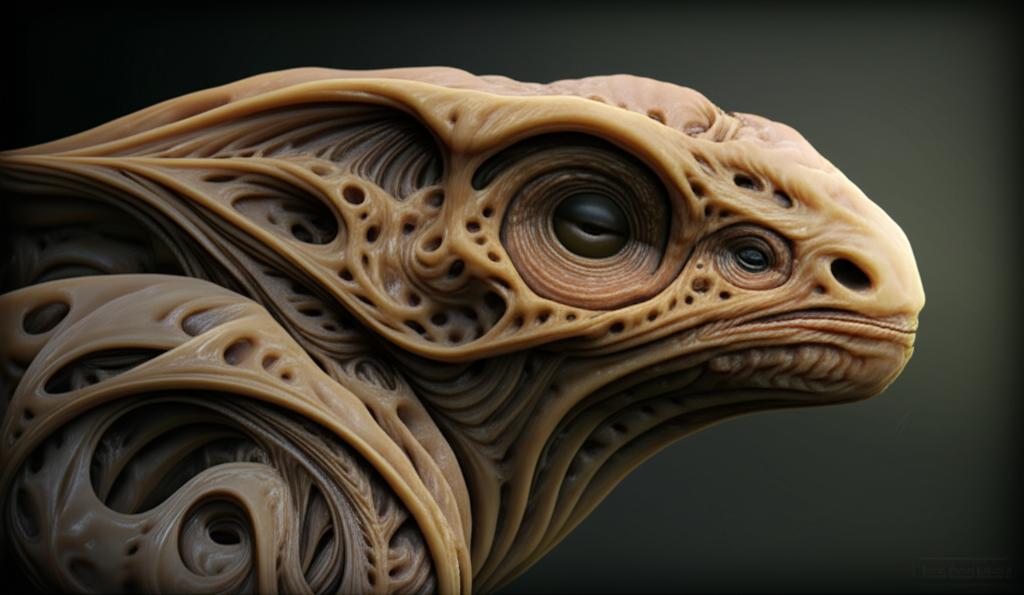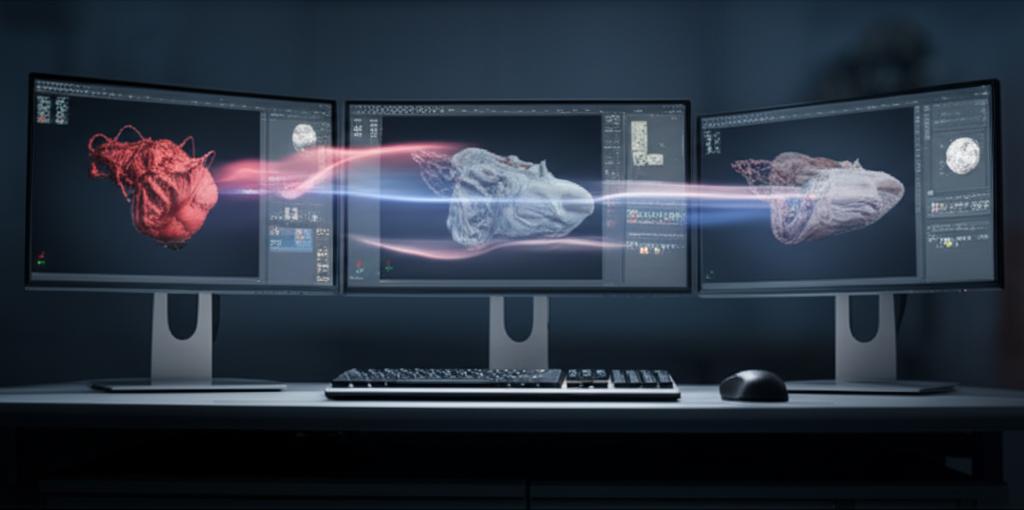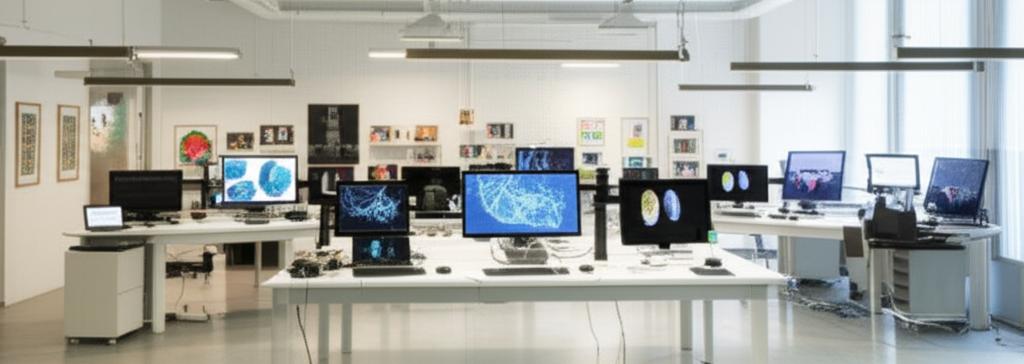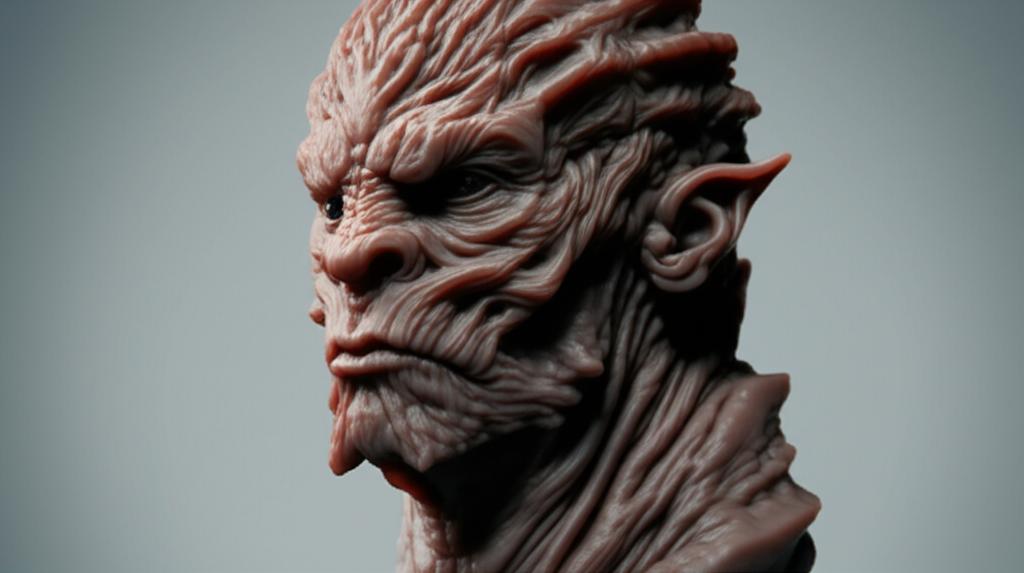In the dynamic realm of 3D artistry, selecting the right software can be the linchpin of a successful project, especially when delving into the intricate world of organic modeling. Two titans frequently stand at the forefront of this discussion: ZBrush and Maya. Both are undeniably powerful, industry-standard applications, yet they approach the creation of organic forms from fundamentally different philosophies. Understanding these distinctions is crucial for artists, studios, and aspiring professionals aiming to produce high-quality characters, creatures, and other organic assets. This comprehensive comparison will dissect their core strengths, workflows, and cost implications, helping you navigate the choice between these two powerhouse `professional 3D tools` for achieving `organic modeling excellence`.
Primary function and workflow philosophy
At their heart, ZBrush and Maya serve distinct primary functions, which dictate their respective workflows and how artists interact with them.
ZBrush: The digital sculptor's paradise
ZBrush, developed by Pixologic and now part of Maxon, is renowned as the ultimate digital sculpting tool. Its philosophy is deeply rooted in traditional sculpting, offering an intuitive, tactile experience that closely mimics working with real clay. Artists can push, pull, smooth, and pinch millions of polygons with an array of specialized brushes, allowing for unparalleled freedom in creating intricate organic forms. The workflow in ZBrush is often non-linear and highly iterative, encouraging experimentation and artistic expression without the rigid constraints sometimes found in polygon modeling. It excels at quickly blocking out shapes and progressively adding layers of fine detail, making it the `best sculpting software` for artists focused on high-fidelity organic assets.
Maya: The comprehensive 3D production suite
Autodesk Maya, on the other hand, is a comprehensive 3D computer graphics application that offers a vast array of tools for modeling, rigging, animation, rendering, and visual effects. While it possesses modeling capabilities suitable for organic forms, its core philosophy leans towards precision, control, and integration within a full production pipeline. Maya's modeling tools are primarily polygon-based, allowing for meticulous control over topology, edge flow, and UV mapping. Its workflow is often more structured and technical, focusing on creating clean, animation-ready meshes from the outset. For artists who need a Swiss Army knife for all aspects of 3D production, Maya offers a robust, all-encompassing environment.
Organic modeling capabilities: A deep dive

When it comes to crafting organic shapes, both software packages offer compelling features, but their approaches and strengths differ significantly.
ZBrush: Unrivaled organic detail and artistic flow
- Sculpting Brushes: ZBrush's strength lies in its extensive and highly customizable brush system. Brushes like Clay Buildup, Standard, Dam Standard, and Orb Cracks allow artists to quickly add volume, define forms, create wrinkles, scars, and intricate surface details with incredible precision. The sheer variety of brushes and their customizable alphas and strokes provide an almost limitless toolkit for any organic form.
- Dynamesh: This feature revolutionizes the sculpting process by allowing artists to dynamically remesh their model as they sculpt, ensuring a uniform polygon distribution regardless of how much they stretch or push the mesh. This eliminates the need for constant retopology during the initial creative phase, fostering an uninterrupted artistic flow.
- ZRemesher: Once the high-detail sculpt is complete, ZRemesher is ZBrush's powerful automatic retopology tool. It intelligently generates clean, animation-friendly quad topology from complex sculpts, a critical step for preparing assets for rigging and animation in other software.
- Polypaint: ZBrush allows artists to paint directly onto the model's vertices, providing a highly intuitive way to add color and texture without needing UVs initially. This is particularly useful for concept art and quickly visualizing texture ideas before committing to full UV unwrapping.
- Fibermesh: For creating hair, fur, and fibrous details, Fibermesh offers a robust solution, generating geometry directly from masked areas on the sculpt.
ZBrush truly shines in the creation of highly detailed characters, creatures, and organic props. Its ability to handle tens of millions of polygons with relative ease means artists can push the boundaries of detail, making it an indispensable tool for `character design software` and realistic organic assets in games, film, and collectibles.
Maya: Precision modeling and pipeline integration
- Polygon Modeling Tools: Maya's polygonal modeling toolset is extensive and highly precise. Tools like Quad Draw, Extrude, Bevel, Bridge, and Multi-Cut allow artists to construct organic base meshes with clean, efficient topology right from the start. This is crucial for animation, as good topology ensures smooth deformations.
- Subdivision Surfaces: While starting with a low-polygon base, Maya leverages subdivision surfaces (often called 'smooth mesh preview') to create incredibly smooth organic forms. Artists can work with a low-poly cage for easy manipulation, and the software will render a high-resolution, smooth version.
- Integrated Sculpting Tools: Maya does include its own set of sculpting tools, which have improved over the years. These tools are generally more suited for refining existing geometry, adding subtle surface details, or making minor adjustments rather than creating high-detail organic forms from scratch. They are not as robust or extensive as ZBrush's brush system.
- Retopology & UV Mapping: Maya provides excellent tools for manual retopology (e.g., Quad Draw) and comprehensive UV mapping capabilities. These are essential for taking a high-detail sculpt from ZBrush, creating a low-poly, animation-ready version, and then baking normal and displacement maps.
Maya excels at creating clean, production-ready meshes that are optimized for animation and rendering. While it can model organic forms, its strength lies in its ability to integrate these models into a complete 3D scene, with rigging, animation, and rendering capabilities all under one roof. It's often the environment where `organic modeling software` from ZBrush finds its final form.
User interface and learning curve
The user experience in ZBrush and Maya couldn't be more different, significantly impacting the learning curve for new users.
ZBrush: A unique and powerful paradigm
ZBrush's user interface is famously idiosyncratic. It doesn't adhere to conventional software design principles, often presenting a steep initial learning curve. Its menus are context-sensitive and can feel overwhelming at first glance, with a plethora of buttons and sliders. However, once mastered, this unique UI becomes incredibly efficient. Artists often describe it as an extension of their hand, allowing for rapid iteration and creative flow. The learning process involves re-training muscle memory and thinking differently about 3D space, but the payoff for `best sculpting software` is immense.
Maya: Industry-standard, feature-rich complexity
Maya's user interface is more conventional, aligning with industry standards found in many other 3D applications. It features a traditional menu bar, tool shelves, panel layouts, and dedicated editors (e.g., Channel Box, Attribute Editor, Outliner). While its layout might feel more familiar to those with prior 3D software experience, Maya's sheer breadth of features contributes to a significant learning curve. Mastering Maya requires understanding its various modules—modeling, rigging, animation, rendering, dynamics—each with its own set of tools and workflows. For generalist 3D artists, the investment in learning Maya is often well worth it due to its versatility as `professional 3D tools`.
Integration into a production pipeline

In a professional studio environment, software rarely works in isolation. How ZBrush and Maya integrate with other tools is a critical consideration.
ZBrush: The sculpting specialist's role
ZBrush typically acts as a specialized sculpting and texturing hub within a larger pipeline. High-detail sculpts created in ZBrush are then often retopologized (either within ZBrush using ZRemesher or in Maya using its modeling tools) to create lower-polygon, animation-friendly meshes. These meshes are then brought into Maya for rigging, animation, and rendering. ZBrush's GoZ feature facilitates seamless round-tripping of models between ZBrush and other applications like Maya, ensuring that artists can easily transfer assets back and forth for refinement. Its output is crucial for baking normal, displacement, and ambient occlusion maps onto lower-poly game or film assets.
Maya: The central production hub
Maya often serves as the central hub for entire 3D productions. It's where models (whether created natively or imported from ZBrush) are rigged with complex skeletal systems, animated with keyframes or motion capture data, and rendered using integrated renderers like Arnold. VFX artists use Maya for simulations (fluids, cloth, particles) and complex scene assembly. Its robust interoperability allows it to import and export various file formats, making it highly compatible with other `professional 3D tools` in a studio's arsenal. For projects requiring a full animation or VFX pipeline, Maya's comprehensive nature is invaluable.
Performance and system requirements
The technical demands of each software package can influence hardware choices and overall workflow efficiency.
ZBrush: CPU-centric sculpting power
ZBrush is remarkably efficient at handling extremely high polygon counts, often millions or even billions of polygons, thanks to its proprietary 2.5D canvas technology and efficient memory management. It is primarily CPU-dependent, meaning that a powerful multi-core processor and ample RAM (16GB or more is recommended) are more critical than a top-tier graphics card. While a good GPU helps with display, it doesn't impact sculpting performance as significantly as the CPU. This efficiency makes ZBrush accessible on a wider range of hardware, allowing artists to focus on the creative process without constant technical bottlenecks.
Maya: Demanding, GPU-accelerated performance
Maya, being a full 3D suite, can be significantly more demanding on system resources. It benefits greatly from both a powerful multi-core CPU and a high-end dedicated graphics card (GPU) with ample VRAM. Complex scenes with many objects, high-resolution textures, simulations, and rendering tasks can quickly consume system resources. More RAM (32GB or more is often recommended for professional work) is also crucial for handling large scenes and complex calculations. While Maya can handle high-poly models, it generally performs best when meshes are optimized, and relies on the GPU for smooth viewport navigation and display, especially with modern real-time rendering features.
Cost structure and licensing

The financial aspect is a significant factor in choosing `organic modeling software`. Both ZBrush and Maya have evolved their licensing models over time, and understanding their current structures is key.
ZBrush: Evolving licensing with Maxon
Historically, ZBrush was known for its perpetual license model, which was highly valued by many artists. Following its acquisition by Maxon, the licensing options have expanded. Currently, ZBrush is primarily available through:
- ZBrush Subscription: A dedicated monthly or annual subscription for ZBrush itself. This provides access to the latest versions and updates.
- Maxon One Subscription: A comprehensive subscription bundle that includes ZBrush along with other Maxon products such as Cinema 4D (for 3D modeling, animation, and motion graphics), Redshift (a GPU-accelerated renderer), Red Giant (VFX and motion graphics tools), and Forger (3D sculpting for iPad). This option is designed for artists and studios that require a broader suite of creative tools within the Maxon ecosystem.
The cost varies significantly depending on whether an artist chooses a standalone ZBrush subscription or the Maxon One bundle, and the duration of the subscription (monthly usually being more expensive per month than annual). It's important for users to evaluate their need for other Maxon software when considering the Maxon One package.
Maya: Subscription-based industry standard
Autodesk Maya operates predominantly on a subscription-based model. This is standard practice for most professional Autodesk software. Licensing options typically include:
- Monthly Subscription: Offers maximum flexibility, allowing users to subscribe for short-term projects.
- Annual Subscription: Provides a cost saving compared to monthly subscriptions and is suitable for ongoing professional use.
- 3-Year Subscription: Offers the most significant cost savings for long-term commitments.
Autodesk also offers generous educational licenses, providing free access to Maya for qualified students and educators, which is a massive advantage for learning and academic projects. For commercial users, Maya's pricing reflects its status as an industry-standard, comprehensive `professional 3D tools` package. Pricing can also vary based on region and whether it's part of a larger Autodesk collection.
Objective cost comparison
When comparing the costs of `ZBrush vs Maya`, it's not simply a matter of looking at a single price tag. The "cheaper" option is highly dependent on individual circumstances:
- Workflow Needs: If an artist primarily focuses on high-detail organic sculpting and texturing, a ZBrush-specific subscription might be more cost-effective. If a full 3D pipeline (modeling, rigging, animation, rendering) is required, Maya's comprehensive offering might be more efficient, potentially negating the need for multiple separate software subscriptions.
- Ecosystem Integration: For those already using or planning to use other Maxon products (like Cinema 4D), the Maxon One bundle could offer better value. Similarly, for users entrenched in the Autodesk ecosystem, Maya fits seamlessly.
- Duration of Use: Short-term projects might benefit from monthly subscriptions, while long-term studio needs often make annual or multi-year subscriptions more economical.
- Educational Status: Students and educators can access Maya for free, which is a significant factor for those in academic settings.
It's crucial to consult the official websites of Maxon and Autodesk for the most current pricing and licensing details, as these models can evolve.
Community and resources

The availability of learning resources and a supportive community can significantly impact an artist's growth and problem-solving capabilities.
ZBrush: A passionate, dedicated community
ZBrush boasts a highly passionate and dedicated community of artists. Pixologic (now Maxon) has historically provided excellent official resources through ZClassroom, offering a wealth of tutorials and documentation. Beyond official channels, there's an immense ecosystem of independent artists sharing knowledge through:
- Online forums (Maxon's official forums, ZBrushCentral archives).
- YouTube tutorials from individual artists and educators.
- Dedicated online courses on platforms like ArtStation Learning, Gumroad, and various educational sites.
- A vibrant presence on social media and art-sharing platforms like ArtStation.
The focus of the ZBrush community often revolves around artistic techniques, sculpting workflows, and `character design software` specifics.
Maya: Extensive, industry-backed support
As an industry-standard application, Maya benefits from an incredibly vast and well-established community and an abundance of learning resources. Autodesk provides comprehensive documentation, tutorials, and support forums. Beyond that, the sheer volume of third-party educational content is staggering:
- Official Autodesk learning materials and certifications.
- Extensive online courses on platforms like Pluralsight, Udemy, Coursera, Gnomon Workshop, and many others, covering every aspect of Maya.
- A massive user base across forums, Reddit communities, and social media, ensuring that almost any question can find an answer.
- Countless books, articles, and workshops from industry professionals.
The Maya community is broad, covering everything from modeling and rigging to animation, rendering, and scripting, reflecting its role as a comprehensive `professional 3D tools` suite.
Target audience and use cases

Ultimately, the choice between ZBrush and Maya often comes down to an artist's primary role and the specific demands of their projects.
ZBrush: For the dedicated sculptor and concept artist
ZBrush is the go-to choice for:
- Character and Creature Artists: Those who specialize in creating highly detailed organic characters, monsters, and animals for games, film, and collectibles.
- Concept Artists: For rapidly prototyping ideas and exploring organic forms in 3D, often providing a base for 2D paintovers.
- Digital Sculptors: Artists who enjoy the tactile process of sculpting and want to achieve unparalleled levels of surface detail.
- Game Artists: For high-poly sculpts used to bake normal and displacement maps onto low-poly game models.
If your primary focus is on the artistic creation of organic forms and achieving the highest possible detail, ZBrush is arguably the `best sculpting software` available.
Maya: For the 3D generalist and full-pipeline production
Maya is the preferred tool for:
- 3D Generalists: Artists who need to handle multiple aspects of 3D production, from modeling and texturing to rigging, animation, and rendering.
- Animators and Riggers: Its robust rigging and animation toolsets are industry standards for bringing characters and creatures to life.
- VFX Artists: For creating complex visual effects, simulations, and integrating 3D elements into live-action footage.
- Environment and Prop Artists: While capable of organic forms, it's also excellent for hard-surface modeling and assembling large, complex scenes.
If your workflow demands a comprehensive solution for the entire 3D pipeline, or if you need to create clean, animation-ready models that integrate seamlessly into a larger production, Maya stands out as the `organic modeling software` of choice for many studios.
Conclusion: Choosing your path to excellence

The debate of `ZBrush vs Maya` is less about which software is inherently "better" and more about which tool aligns best with your specific artistic goals, workflow, and budget. Both are titans in their respective domains, offering `professional 3D tools` that push the boundaries of what's possible in digital art.
- Choose ZBrush if your passion lies in the raw, artistic process of digital sculpting, creating incredibly detailed organic forms, characters, and creatures with an intuitive, clay-like feel. It excels where artistic freedom and intricate surface detail are paramount.
- Choose Maya if you require a comprehensive, all-in-one solution for the entire 3D production pipeline, from precise modeling and efficient retopology to rigging, animation, and rendering. It's the workhorse for studios and generalists who need to manage complex projects from start to finish.
Crucially, many professional pipelines leverage both. Artists often begin with ZBrush to sculpt high-resolution organic forms, then export these models to Maya for retopology, UV mapping, rigging, animation, and final rendering. This synergistic approach combines the unparalleled sculpting power of ZBrush with Maya's robust production capabilities, offering the best of both worlds for achieving `organic modeling excellence`.
Ultimately, the decision rests on your individual needs, the nature of your projects, and your preferred way of working. Both applications represent significant investments of time and resources, but mastering either (or both) will undoubtedly elevate your capabilities in the exciting world of 3D art.



